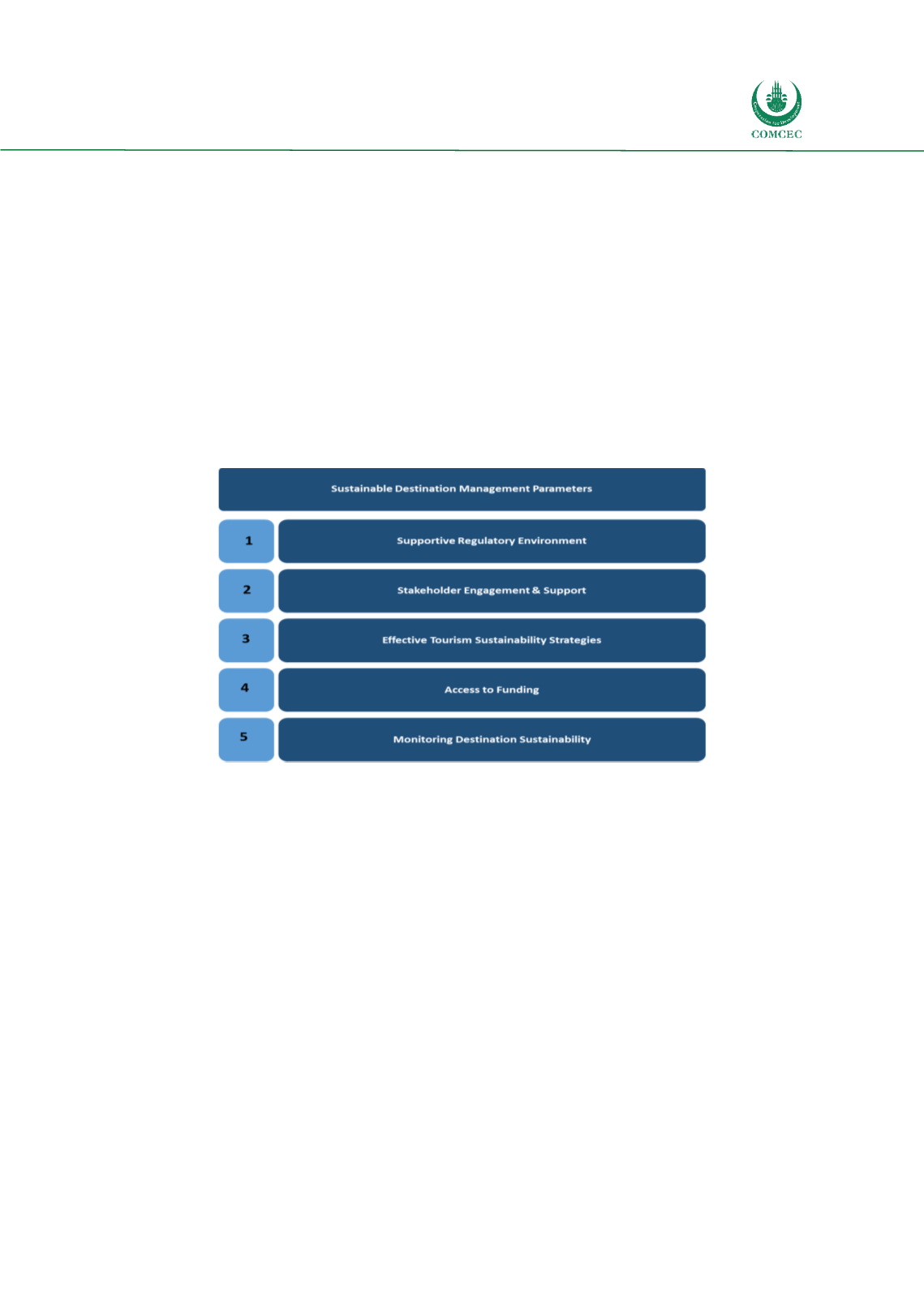

Sustainable Destination Management
Strategies in the OIC Member Countries
105
3. OIC Member States vs. Global Best Practices Comparative Analysis
3.1. Sustainable Destination Management Parameters
In this chapter, global best practices across the core components of sustainable destination
management are compared to select OIC member states in several key areas; regulatory
environment, stakeholder engagement, sustainable tourismstrategies, financing, andmonitoring of
sustainable destination development. Against each of these areas, we examine select best practice
non-OIC countries, and provide examples for comparison from select OIC countries building upon
the case studies presented earlier. While these case studies may not be a complete reflection of the
norm, their distribution in terms of sustainable tourism practices and geography allows important
conclusions to be drawn.
Figure 18: Sustainable Destination Management Parameters
Source: DinarStandard Analysis
3.2. Parameter 1: Supportive Regulatory Environment
As mentioned earlier, DMOs are responsible for implementing sustainability policies and
strategies in many areas as well as engaging, coordinating with and supporting stakeholders in
the area of sustainable tourism. However, in most countries, a number of other government
bodies, including government environmental agencies in many instances, are involved in
developing sustainable tourism strategies
.
While various public, private, and non-governmental
organizations are typically involved in sustainable destination development, the development and
enforcement of sustainable tourism policies and regulations remain essentially a governmental
responsibility. Governments have used a number of policy instruments to promote the adoption of
sustainable practices in the tourism industry, including regulations setting specific sustainability
targets such as maximum carrying capacities, land use planning regulations, environment impact
assessment requirements, and environmental taxes and incentives.
In leading non-OIC countries, as the following table shows, several public, private and non-
governmental entities cooperate in the area of sustainable tourism, eachwith a distinctwell-defined
















